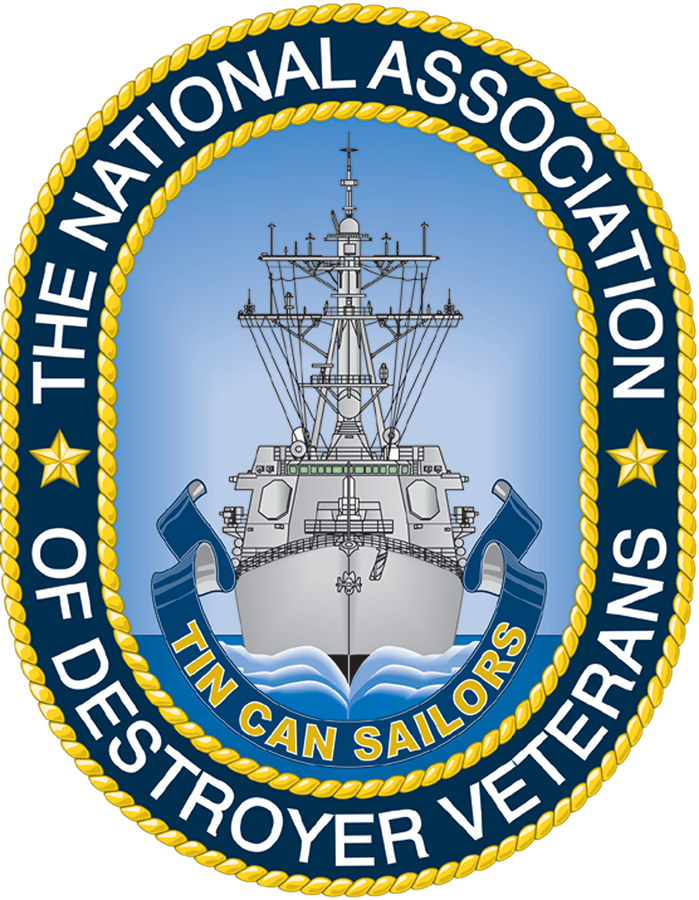Hull Number: DE-701
Launch Date: 11/04/1943
Commissioned Date: 02/23/1944
Decommissioned Date: 03/15/1947
Call Sign: NKZH
Class: BUCKLEY
BUCKLEY Class
Namesake: WESLEY FRANK OSMUS
WESLEY FRANK OSMUS
Dictionary of American Naval Fighting Ships, April 2016
Wesley Frank Osmus, born on 2 September 1918 in Chicago, Illinois, attended the University of Illinois, and later enlisted in the U.S. Naval Reserve (USNR) at the U.S. Naval Reserve Aviation Base (NRAB), Chicago (Glenview), on 26 March 1940 as a seaman 2d class. Placed on inactive duty the same day, he reported for elimination flight training at Glenview on 14 April. Upon completion of that period of instruction, he was released from active duty exactly one month later, on 14 May. Issued a “good” discharge on 3 September 1940, Osmus accepted an appointment as an aviation cadet, USNR, the following day.
Reporting to the Naval Air Station (NAS) at Pensacola, Florida, on 9 September 1940, for flight training, he later transferred to NAS Miami, Florida, for further instruction, on 12 March 1941, reporting for duty two days later, and received the designation as naval aviator, heavier-than-air, on 25 March. Orders dated 12 April 1941 directed him to report to the Fleet Air Detachment, San Diego, California, for further flight training; accepting his appointment as ensign, USNR, on 22 April, Osmus ultimately reported to the Douglas TBD-1-equipped Torpedo Squadron (VT) 3, a unit of the Saratoga (CV-3) Air Group, on 15 August 1941.
“Torpedo Three” carried out its training with its TBDs (officially nicknamed Devastators on 20 October) through the autumn of 1941, alternating its time ashore and afloat. The Japanese attack on the U.S. Pacific Fleet at Pearl Harbor on 7 December 1941 found Saratoga at San Diego, following her refit at Puget Sound. Saratoga sailed for Hawaiian waters soon thereafter, and over the next few weeks operated from Pearl, initially to cover a portion of the abortive attempt to relieve Wake Island in December 1941. Saratoga’s torpedoing by Japanese submarine I-6 on 11 January 1942, however, meant sending her air group ashore to serve as a pool for the other carriers operating out of Pearl. Torpedo Three ultimately came to be based at NAS Kaneohe Bay, whence they flew out to the carrier Yorktown (CV-5) on 30 May 1942 as the ship headed out to a point northeast of Midway Island in Task Force 17.
On the morning of 4 June 1942, with definite word of the position of the Japanese carrier striking force (Kido Butai) having been received, Yorktown launched her striking group. VT-3, screened by fighters from Fighting Squadron (VF) 3 and accompanied by Bombing Squadron (VB) 3, encountered Japanese Mitsubishi A6M2 Type 00 fighters that soon engaged the outnumbered VF-3 in desperate dogfights, drawing off the American escort. Only two of the 12 Devastators from VT-3 escaped the deadly melee, both ultimately ditching en route to friendly flight decks.
Piloting the last plane in VT-3’s formation, Osmus was shot down during the run-in toward the Japanese fleet. While he managed to bail out of his burning Devastator, his radio-gunner, ARM3c Benjamin R. Dodson, either already dead or unable to do so, did not. Osmus was awarded a Navy Cross, posthumously.
Post-war research in Japanese records of the Battle of Midway revealed that Osmus was picked up by the destroyer Arashi, which was proceeding independently to rejoin the Kido Butai after an unsuccessful hunt for a U.S. submarine. Arashi soon arrived to find three of the force’s four carriers burning and out of action. Subjecting the injured young pilot to duress at that critical juncture yielded information concerning the composition of the U.S. carrier task groups at Midway, but it availed the enemy little, for by the end of the day the last operational Japanese carrier had been disabled and the outcome of battle decided. Sometime later, most likely on the night of 4 June, Osmus was murdered by his captors.
Disposition:
Sricken 1 December 1972, Osmus was sold on 27 November 1973 to Levin Metals Corp., San Jose, Calif., and was broken up for scrap subsequently.
